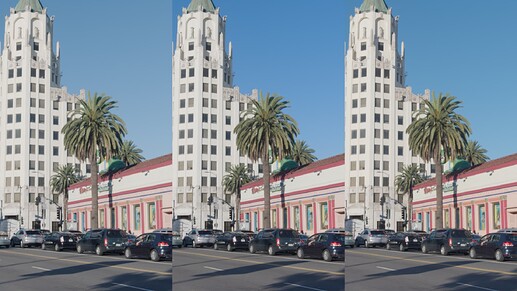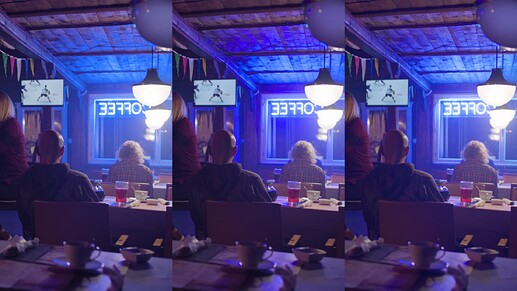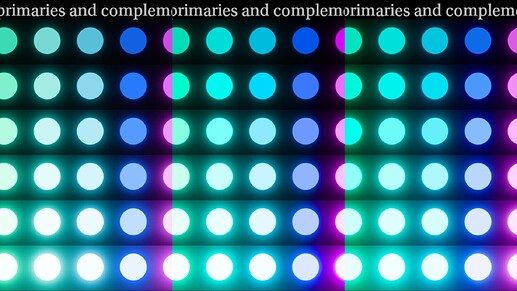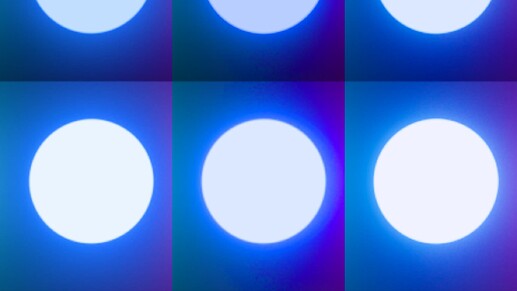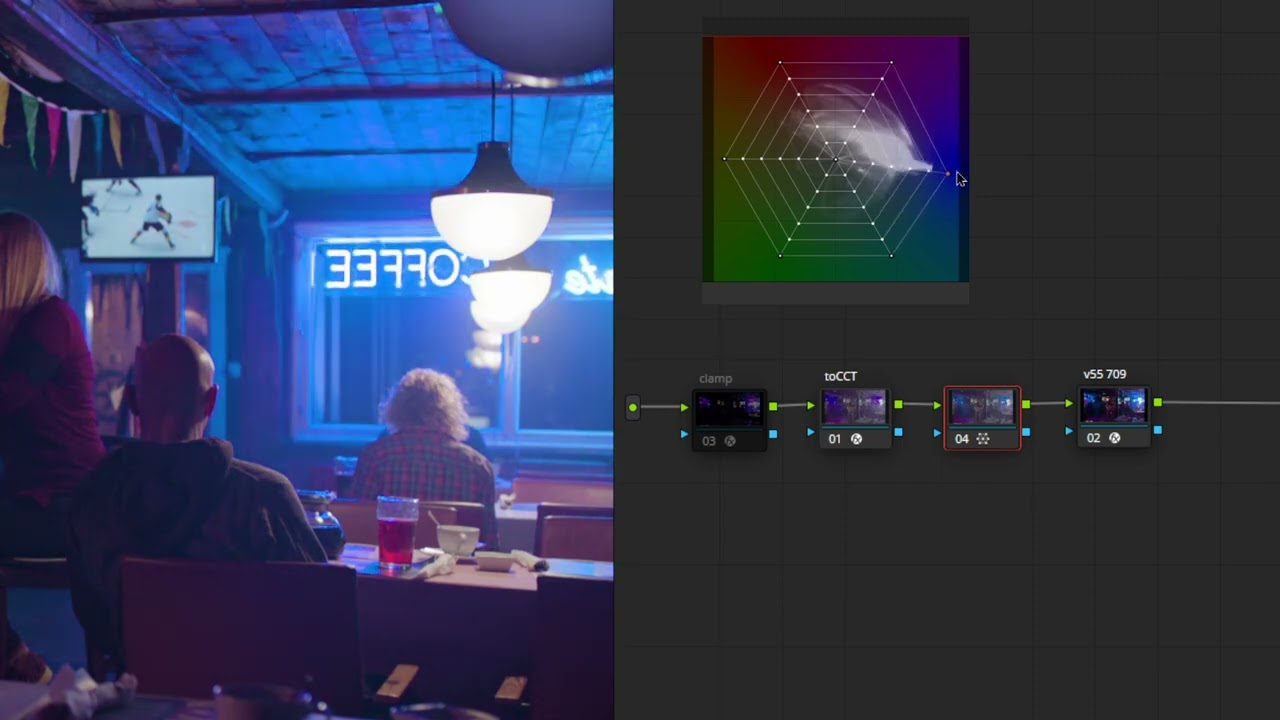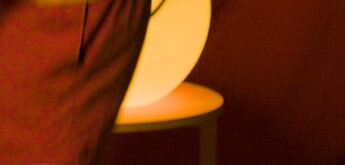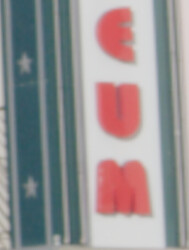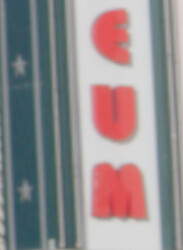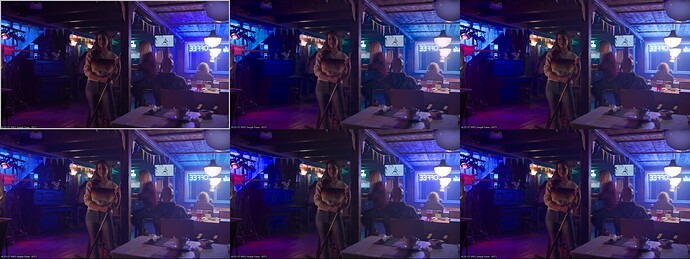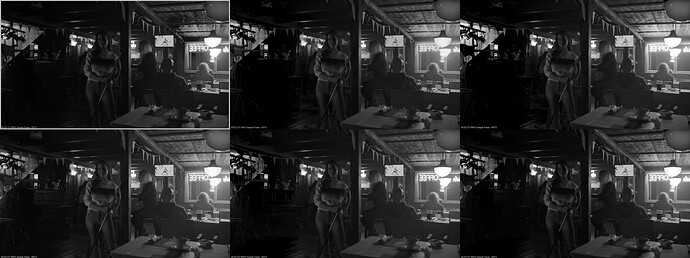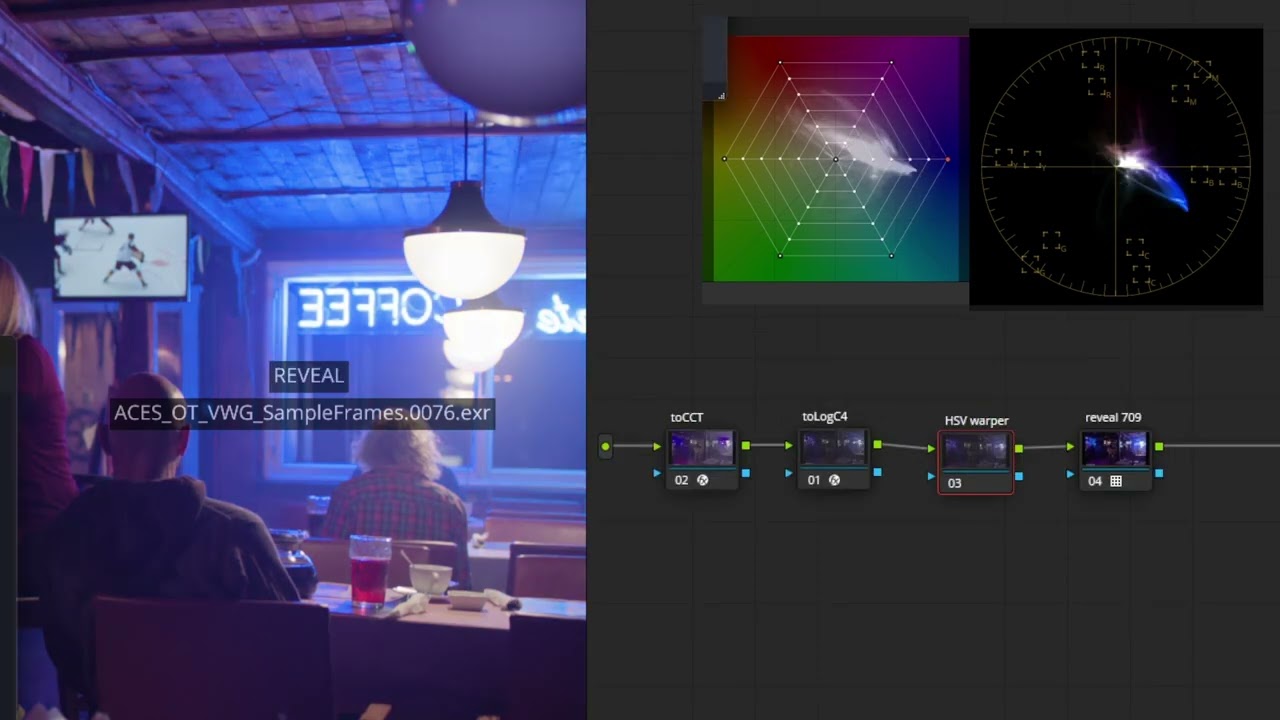Still haven’t found a good moment to fully evaluate the current 2.0 DRT but over the course of the last meetings I do see some of my concerns being discussed. I think it’s heading in the right direction but since I feel that feedback is a bit scarce I will throw out some of my personal findings. Please be mindful that I’m just one sample of opinions  .
.
These are all based on v055 SDR Rec.709.
Screengrabs always have v055 in the middle (second image).
Overall SDR:
I think the rendering is very pleasing and feels quite ‘neutral’ compared to some other DRTs which I find the most desireable to start grading.
Overal HDR:
Can’t comment yet until I’ve evaluated it properly. But I do have a Resolve setup prepped. Don’t have a fancy grading suite but I do have a PA32UGC and dimmable room which should be good enough.
01: ‘normal’ blues SDR
I feel that blue renders slightly too dark or too saturated, or a bit of both. This is very visible when comparing to other renderings but even in isolation I feel that they stand out from other colors too much. My reasoning behind that is that clear skies look quite colorful when objects lit by sunlight look quite desaturated in relation. This ratio looks more sensible in other renderings.
I think that this could be slightly more balanced so that a colorist doesn’t have to worry about always having blues more intense than any other color when wanting to push saturation in a look for example.
Grading: easy to correct.
Examples: (v055 middle)
02: night sky blue
There is one particular image that stood out to me.
The blue sky feels slightly greenish for some reason. I don’t know if this is the same situation as with the notourious blue screen image regarding where the actual data sits… but for this one it just feels ever so slightly off. Perhaps there is a way to ‘justify’ or explain why this is.
Grading: very easy to correct.
Example: (v055 middle)
03: high saturated/emissive blues
While I think improvements have been made to this, I feel that the biggest issue with how blue looks has to do with the transition/gradient to white and probably less with how long it retains color or how dark it is in general. When looking at for example the Rec.2020 spheres you can still see that there is a sort of ‘fold’ in the gradient that in my mind should be smooth. Same can be said for the ‘blue bar’ and the CG dragon with red/blue spheres.
What I found interesting when messing with Resolve’s color warper was that on blue bar, the rendering can very quickly ‘snap’ into a better look by moving the blue outer point slightly towards cyan. Then I found the same tactic also worked for the other problematic images. It feels like there is a point in the DRT that once information sits there it either becomes full blue primary, or becomes desaturated cyan, or jumps to purple. But the range where this happens feels incredibly tight.
I could give myself the argument that I can always grade such images to correct the rendering but it feels odd to me that other renderings don’t suffer from this. When I slide that blue point up and down in the two other DRTs I tested the colors don’t break at that small range I mentioned above.
Grading: what I mentioned above did improve the appearance but it is quite tricky and finicky to manage and make look good so I wouldn’t accept this as part of a colorist’s task and try to aim for a better behaving rendering.
Here is also a video example of what I did.
It’s also worth mentioning that I didn’t use RGC anywhere. I found that RGC didn’t contribute anything to v055 regarding this issue. It only desaturated colors a bit more but didn’t improve gradation. Perhaps different settings are required or a different type of RGC all together for this new DRT instead of the current reference implementation?
04: red noise
I have an image of which you may argue that it’s from a less relevant camera in today’s cinematogrpahy, EPIC-X. But I found it to have a lot of noise on deep red cloth compared to other DRTs. This however is totally diminished and cleaned up when RGC is applied. So I don’t see this as a huge issue but perhaps as an image it’s something interesting to look at. I could probably share this frame with censoring/or crop for internal testing for those of you actually developing it, so if you’re curious let me know.
That’s all I have for now. Hope it’s useful!


